2022美国最佳赏秋叶地点!层林尽染秋意渐浓
09/25/2022
在经历了一个夏天的热浪和高温之后,秋天终于迎来众望所归。秋天标志着丰收采摘的开始,同时也是一年中穿越美国的最佳时机。夏季翠绿的景致已悄然褪去,深秋的色彩开始照耀全美境地,在秋季落叶纷纷掉落,铺满孕育它的土地,当你融入这片土地时,会发觉美在其中。一边开车一边打开秋色地图,来到火红秋叶覆盖着的横跨山脉和湖泊周围。从沿海高速公路到加州的老矿业城镇,下面就带你寻找2022年全美大地“最美的落叶”。

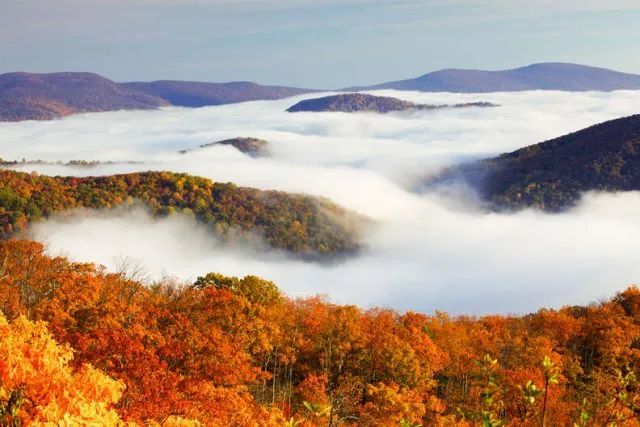
该公园位于西部的谢南多厄山谷(Shenandoah Valley)和东部的皮德蒙特地区之间,是一片广阔的林木空地和微风的山顶,这一区域的景色异常美丽,没有比这里更适合观赏秋叶的地方了。它是著名的105英里天际线大道所在地,在这里你会被红色、橙色、黄色和绿色的树冠所笼罩。往公园的东部边界走,你会发现另一条著名的车道:Blue Ridge Parkway,从弗吉尼亚州中部的起点到Cherokee国家森林的终点,海拔高达数千英尺。通常情况下,高海拔地区的叶子会在9月中旬先变色,而低海拔地区的叶子会随着季节的推移而变色。

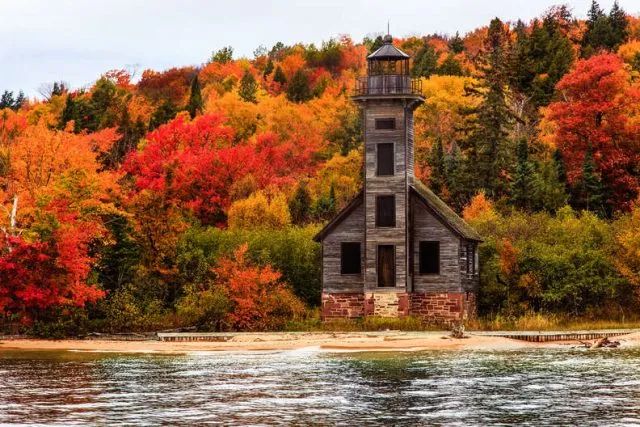
即使是在一个以美丽的沿海风景著称的州,也没有一个地方能超过Upper Peninsula。
它与三大湖接壤,秋天的树叶带你穿过Mackinac桥,沿着Keweenaw半岛一路向前。
夏季的葱郁在秋季转变为漫山的彩叶,这些斑斓的色彩与遍布Upper Peninsula的瀑布、野径与内陆湖,组成了密西根的秋季荒野之行。
欣赏美景的最佳地点是最北部的Copper Harbor,但开车穿过广阔的荒野也同样是一段让人兴奋的旅途。


每年9月中旬到10月中旬是拍摄科罗拉多红叶的最佳时期。
友情提醒,树叶变色的准确时间实在很难掌握,许多地方的红叶只能持续一周左右的时间。
这个位于丹佛西南160英里的度假小镇真的值得一去,只为欣赏明亮的黄色和橙色秋叶与帝王般矗立着的雪山形成鲜明对比。
参观附近的Maroon Bells与北美最上镜的山脉,然后享受洒落着“金色斑点”的小径缓慢踱步,在天气好的日子里,山和树倒映在宁静、静止的水中互相辉映,快来一起感受大自然的鬼斧神工吧!


美国游客最多的国家公园可不是说说而已的。
大烟山闻名世界的最主要原因是当然是那里令人神往的秋季景色了!特别是10月中旬到11月初,这段时间大烟山将变成一片橙色、黄色和红色的海洋,配合着大烟山特有的雾气朦朦,烟雨红叶。
欣赏美景的最佳方式之一是徒步前往Glass Falls,这样一个仙境瀑布,不用跋山涉水就可以轻松到达。

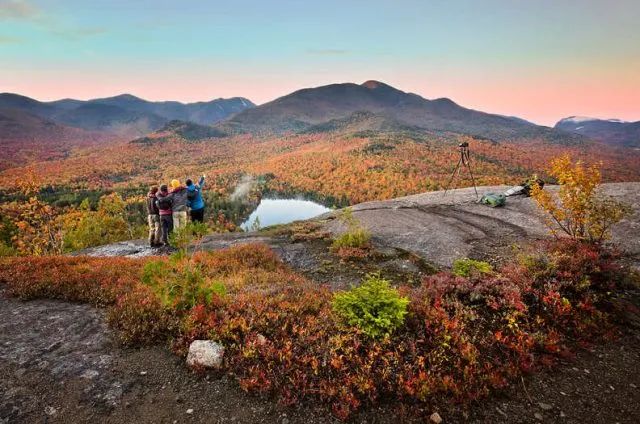
虽然Adirondacks山脉9月的后两周可能是赏叶季节的高峰期,但这里整个10月的周末都会举行关于红叶的节日。
往南走几小时就是纽约Catskills,在那里著名的东温德姆“五州瞭望台”可以让你同时观察到纽约州、佛蒙特州、新罕布什尔州、马萨诸塞州和康涅狄格州的秋叶。
还可以登上Catskills海拔3214英尺的Utsayantha Mountain,享受360度的观赏秋叶体验。如果你不太喜欢运动,在Hunter Mountain有一个风景优美的空中缆车,可以让你慢慢欣赏山顶上颜色的变化。


这座曾经的金矿小镇坐落在圣地亚哥县的偏远地区,距离市区约一小时的车程,就在Cuyamaca Rancho州立公园的北面。
你可以在Lake Cuyamaca周边徒步,沿着Volcan Mountain和Garnet Peak Trails上山,或者挑战自己去Three Sisters Falls欣赏南加州最美的秋叶。
但Julian最为人们所称道的秋季项目居然是苹果采摘:去Volcan Valley苹果农场或Calico果园牧场吧,离开时一定要路过Julian Pie 公司,尝尝有机樱桃、水蜜桃或有机苹果派,美味美景都要同时享有。

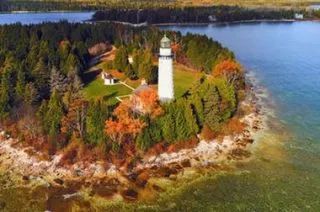
Door County以风景如画的沿海城镇、特色商店、鱼饵、樱桃和苹果园而闻名。被称为“中西部的科德角”。
「编者注:科德角,是美国东北岸马萨诸塞州东南部伸入大西洋的一个海岬半岛,面积1033平方公里,邻近波士顿。当地的历史、海洋特色以及迷人的海滩在夏季吸引了大量游客。」
徒步或皮划艇穿过半岛州立公园。去看看纽波特国家公园的白日秋叶和夜晚繁星点点。离开的时候一定要拍下风景优美的Cana Island灯塔,这趟旅行才算完美。

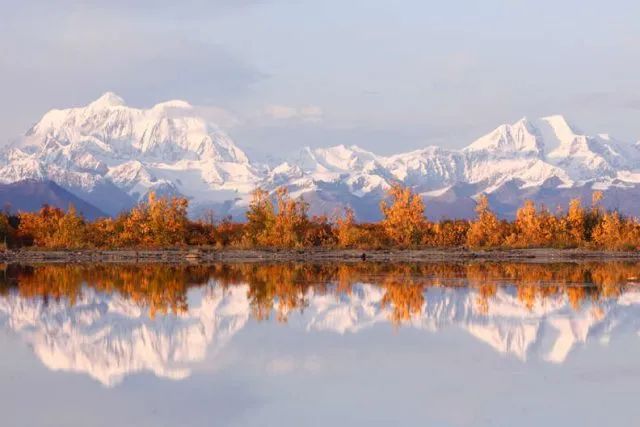
比起春的悸动、夏的热烈、冬的苍茫,诗一般的秋天在阿拉斯加更令人心醉。
到了9月,美国北部灿烂的秋天色彩热烈绽放。
驾车穿过公园不仅可以看到Denali(北美最高点)的明亮色彩,还有机会看到自然环境中的野生驼鹿、熊和麋鹿(由于树叶的色彩变化,这里比平时更美丽)。
这里秋天来得更快,所以你的观叶计划切记不要晚于10月初。


Pine Creek Gorge穿过宾夕法尼亚州中部的Tioga州立森林,被人们亲切地称为宾夕法尼亚大峡谷。在十月初的秋天更是展现出一片明亮的深红、黄色和紫色的美景。
从Leonard Harrison或者Colton Point州立公园徒步可以观赏到整个峡谷的全景,也可以在62英里长的松溪步道上驰骋,这是一条穿越峡谷和迷人小镇之间的小径,在这条小路上,每个方向都可以观看美丽的枫叶。

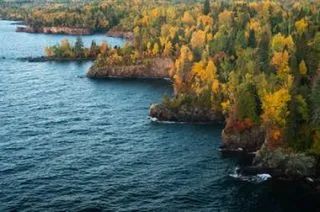
明尼苏达州的北岸是美国最令人惊叹的自驾公路之一,从苏必略湖(Lake Superior)沿岸到Duluth镇再到明尼苏达州瀑布,这里四季风景不同,但各有各的梦幻。
秋季到来之时,五颜六色的秋叶在苏必略湖波涛汹涌的水面反射出迷人光泽,别提多壮观了。

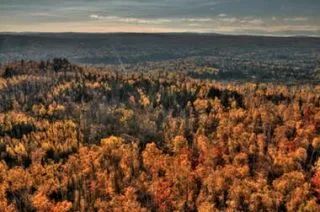
如果你需要更多的证据来证明中西部的秋天可以与东北部的秋天势均力敌,那就去爱达荷州中部的Sawtooth National Forest吧。
在夏天,这里是美国最被低估的海滩之一,到了秋天,本已稀少的人群变得更加稀少,阳光的色彩覆盖了岸边的树木,绵延200多万英亩。

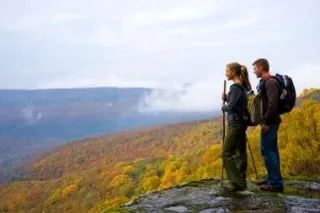
The Ozarks是指一个山区,覆盖了密苏里州、阿肯色州和俄克拉荷马州的大片地区,这里宁静的湖泊点缀着郁郁葱葱茂密的树木。
到了秋天,红叶让周边的氛围变得更加超现实。为了最精彩的观赏体验,你可以沿着风景绝美的Talimena公路行驶,这条54英里长的公路是当地风景最优美的路段。

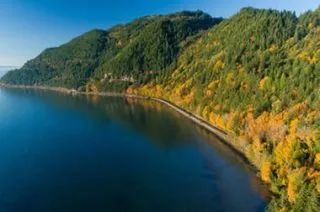
从西雅图到Bellingham的路上有一段结合了田园和海景的无敌风景公路,这条公路就是位于西雅图北部的11号州际公路。
每年一到秋季,11号州际公路就被色彩斑斓的红叶渲染,每一个转弯都会有不同层次的橙色和黄色映入眼帘,沿途有着最美的落叶景观。


Brasstown Bald距离亚特兰大约两个半小时的路程,是佐治亚州东北部山区的最高点,也拥有当地最美的风景。
站在观景台上,你可以欣赏到只有在海拔近5000英尺的地方才能欣赏到的全景秋叶,周围森林环绕,山峦起伏,湖泊蜿蜒,像是没有尽头,360度无碍视野。
遇上晴空万里的好天气,从山巅可以看到四个州(佐治亚州、北卡罗来纳州、田纳西州和南卡罗来纳州),以及亚特兰大的Stone Mountain。
想独享这片美丽的风景吗?那你可以选择在Anna Ruby瀑布附近走一走,感受一下带有薄雾的清爽的秋季空气。
层林尽染,秋叶已进入最佳观赏期,全美大地独特多变的地貌,迷人的自然风光,吸引了众多旅游爱好者。恰逢暖意融融的好日子,邀三五好友,一起徜徉山野,遍观秋叶吧。
硅谷 101 — 有趣的前沿科技深度视频
The US Is Officially A Banana Republic: The Top 1% Now Own More Wealth Than The Entire Middle Class
By Tyler Durden
10/11/2021
In some ways, we sympathize with Neel Kashkari’s fake “concern” about the unprecedented wealth inequality that has emerged in the US in recent years and which has resulted in a slow, methodical and relentless destruction of the US middle class … or rather make that precedented because there was another time when the top 0.1% had amassed as much wealth and it was just before the Great Depression.
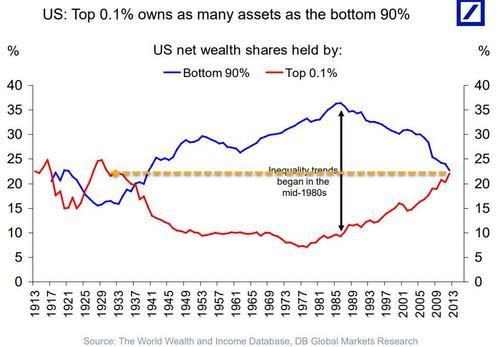
After all, who hasn’t seen charts such as these showing the tremendous divergence in income earned by America’s Top 1% at the expense of the middle and lower classes:
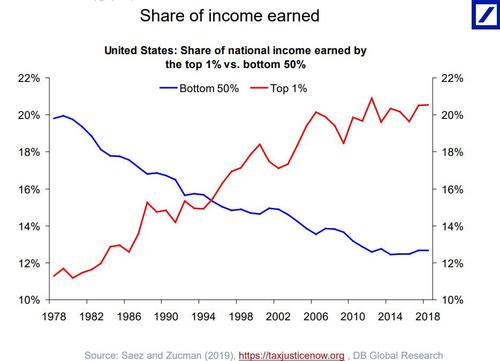
Or that the top 10% now own 70% of all the US wealth, the same as the middle and lower classes combined…
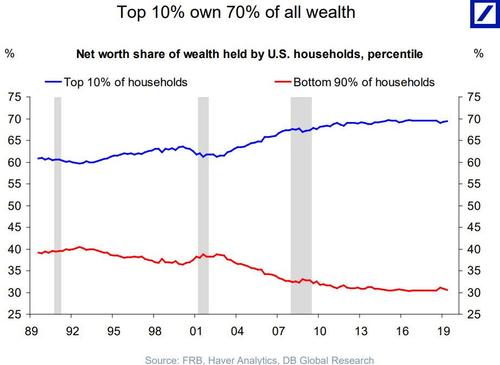
… up 10% from the 60% of wealth they controlled at the start of the century.
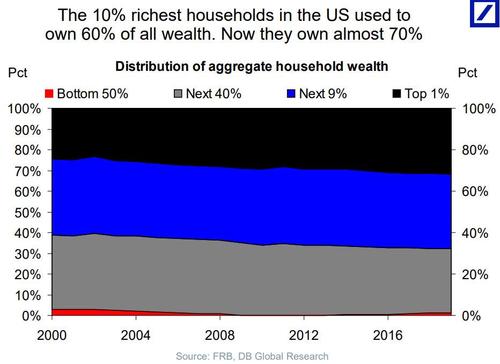
Yet we find Kashkari’s “jaw-dropping” virtue signalling proposal to grant the Fed wealth redistribution power not only laughable but absolutely terrifying: after all it was the Fed’s ZIRP and QE that was behind the greatest wealth redistribution in the past decade…
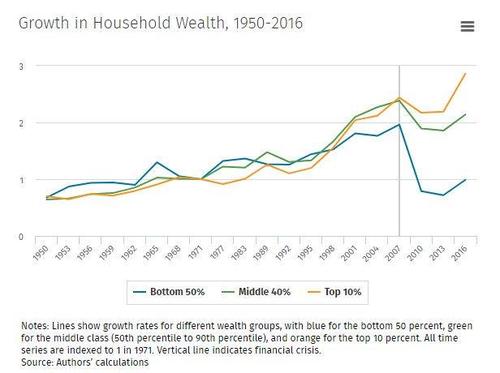
… a redistribution that started almost 50 years ago, when Nixon decided to end the Fed’s biggest nemesis – the US gold standard – launching an unprecedented increase in income growth for the “Top 1%”, even as the income of the “Bottom 90%” has remained unchanged ever since 1971.
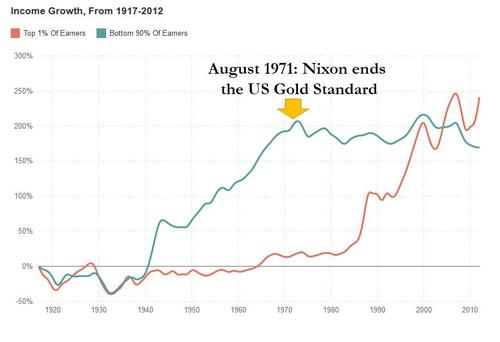
For those confused, Rabobank’s Michael Every put it best: of course the Fed can redistribute wealth but “that redistribution has been from the poor and middle-class to the rich, not the other way round.“
Unfortunately, as we showed back in November 2019, it may already be too late to fix the US: as the following stunning chart shows, the US is already effectively a banana republic if one defines such a nation as one which has a small but ultrapowerful and unaccountable kleptocracy which gets richer year after year by stealing from the rapidly shrinking middle class.
Here is the problem: while the US has one one of the highest median incomes in the entire world, with only three countries boasting a higher income, it is who gets to collect this money that is the major problem, because as the chart also shows, with just a 50% share of the population in middle-income households, the US is now in the same category as such “banana republics” as Turkey, China and, drumroll, Russia.

What is just as stunning: according to the OECD, more than half of the countries in question have a more vibrant middle class than the US.
Alas, since November 2019 it has only gotten worse… much worse because as a result of the unprecedented wealth redistribution unleashed by the covid pandemic, America’s has truly cemented its banana republic status as the wealth of the top 1% exploded as a direct result of the Fed pumping trillions into the stock market and levitating asset values, while the lower and middle classes stagnated.
Two weeks ago, when discussing the latest US record household net worth number, which hit an all time high of $142 trillion or up $31 trillion since Covid, we showed that it would be great if this wealth increase was spread evenly across most Americans, but unfortunately, most Americans have not benefited from recent gains in wealth.
Indeed, the latest data as of Q1 shows that the top 1% accounts for over $41.5 trillion of total household net worth, with the number rising to over $90 trillion for just the top 10%. Meanwhile, the bottom half of the US population has virtually no assets at all. On a percentage basis, just the Top 1% now own a record 32.1% share of total US net worth, or $45.6 trillion. In other words, the richest Americans have never owned a greater share of US household income than they do, largely thanks to the Fed. Meanwhile, the bottom 50% own just 2% of all net worth, or a paltry $2.8 trillion. They do own most of the debt though…
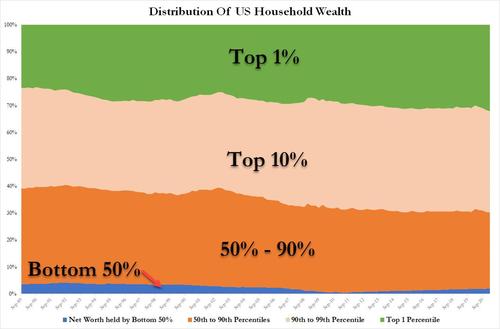
And the saddest chart of all: the wealth of the bottom 50% is virtually unchanged since 2006, while the net worth of the Top 1% has risen by 132% from $17.9 trillion to $41.5 trillion.
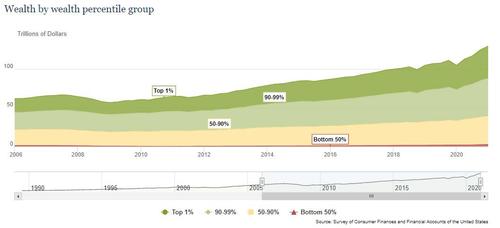
All of which brings us to the latest update from the Fed on Household Wealth distribution published on Friday and covering the second quarter of 2021, and which revealed yet another jawdropping fact about America’s full transformation into a banana republic.
According to the Fed data, which breaks down the distribution of wealth according to income quintile (or 20% bucket) with a special carve out for the top 1%, the middle 60% of US households by income (those in the 20% to 80% income range) – a measure economists use as a definition of the middle class – saw their combined assets drop from 26.7% to 26.6% of national wealth as of June, the lowest in Federal Reserve data, while for the first time the super rich had a bigger share, at 27%.
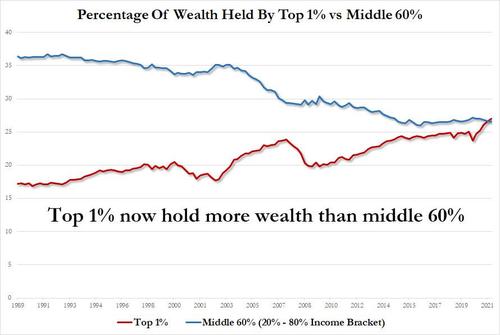
While especially true for the top 1%, it is all the rich that have benefited at the expense of the extinction of the US middle class – as the next chart shows, over the past 30 years, 10 percentage points of American wealth has shifted to the top 20% of earners, who now hold 70% of the total. The bottom 80% are left with less than 30%.
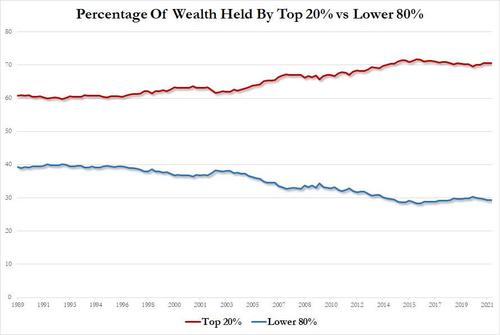
Some context: while “middle class” is a fluid concept, many economists use income to define the group. The 77.5 million families in the middle 60% make about $27,000 to $141,000 annually, based on Census Bureau data. As Bloomberg notes, their share in three main categories of assets – real estate, equities and private businesses – slumped in one generation. That made their lives more precarious, with fewer financial reserves to fall back on when they lose their jobs.

On the other end, the top 1% represents those 1.3 million households out of a total of almost 130 million, who roughly make more than $500,000 a year. The concentration of wealth in the hands of a fraction of the population is at the core of some of the country’s major political battles. It was also made possible entirely by the Fed, which as Stanley Druckenmiller said back in May echoing what we have said since our inception back in 2009, has been the single “greatest engine of wealth inequality” in history (to which we would also add the end of the gold standard under Nixon).
“If the economic system isn’t working for the clear majority of the population, it will eventually lose political support,” Nathan Sheets, newly appointed chief economist at Citigroup Inc., said by email. “This observation is motivating many of the economic reforms that the Biden Administration is putting forward.”
And while Joe Biden is seeking to “bolster” working- and middle-class families with a $3.5 trillion package before Congress that includes assistance with child care, education and health care paid for with tax increases on high-income individuals, what he will do is make the rich even richer as the Fed will have to monetize all those trillions in new debt, boosting risk asset prices even higher, and while the middle class spends any one-time fiscal stimulus merely to cover soaring costs of everyday items like rent and gas, it is the top 1% who will benefit the most again as they stock portfolios hit new all time highs.
It’s not just stocks that have benefited the super rich: housing has too. While a generation ago, the middle class held more than 44% of real estate assets in the country, it is now down to 38%. The pandemic generated a boom in housing values that has benefited most those who owned real estate in the first place. It also led to soaring rents this year, which hurt those who can’t afford a house. The self-feeding loop was yet another source of wealth transfer for the wealthier.
So the next time someone abuses the popular phrase “they hate us for our [fill in the blank]”, perhaps it’s time to counter that “they” may not “hate” us at all, but rather are making fun of what has quietly and slowly but surely become the world’s biggest banana republic?
And it has not Russia, nor China, nor any other foreign enemy to blame except one: the Federal Reserve Bank of the United States.




